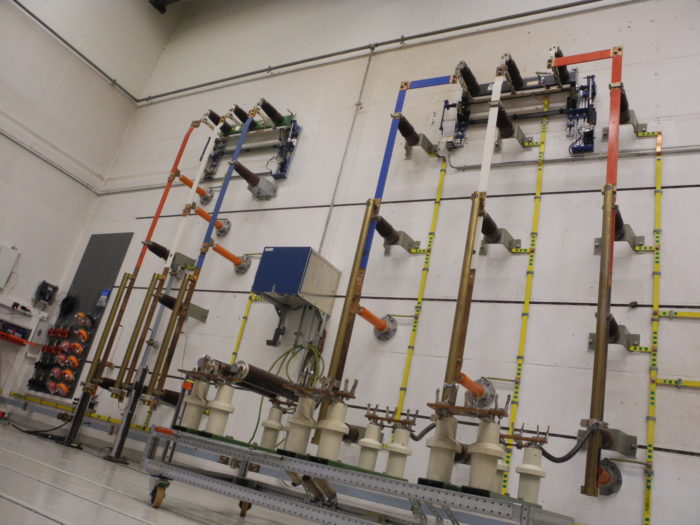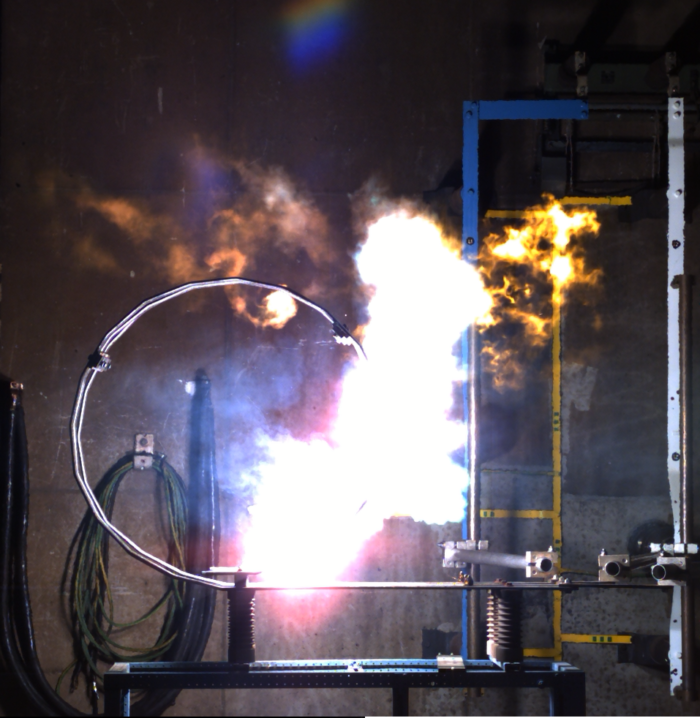Type of tests
Arc fault tests
Arc-fault tests are carried out to prove the equipments ability to withstand the stresses from an internal arc fault, and the equipments personnel safety during the event of such a fault. Typical test objects are transformer distribution stations, high and low voltage switchgear cubicles.
Short circuit tests
Short-circuit tests are carried out to prove that the equipment can carry its rated short-circuit current for a definite time and to withstand the stresses from the asymmetrical momentary peak of short-circuit current. Normally these two functions are tested together in one test. Typical test objects are connection, bus-bar systems, cables and their terminations, electrical apparatus such as switches, disconnectors circuit breakers and transformers.
Making tests
The making tests are carried out to prove that the contacts of a switch are able to close on to a short-circuit at its rated short-circuit peak current as well as making smaller currents a specified number of times without any maintainance of its contacts. The tests are carried out at the rated voltage of equipment. Typical test objects are general purpose switches, earthing switches, switch-fuse combination switches and circuit breakers.
Breaking tests
The breaking tests are carried out to prove that the equipment can interrupt its rated short-circuit current and all normal currents up to and including its rated current. The tests are carried out at the rated voltage of the equipment. Typical test objects are general purpose switches, switch-fuse and fuse-switch combinations, circuit breakers and fuses.

